トヨタ自動車
アンテロープス /
山本 麻衣
TOYOTA Antelopes / Mai Yamamoto
Enjoying basketball my own way
The important thing is understanding your body.
April 17, 2024
![Basketball player [Mai Yamamoto]](/ito-sports-project/assets/img/interview/012/pct_mv.webp)
Interview: Masafumi Mikawa / Photos: Shinichi Shimazaki
Start by getting in touch with the state of your body.
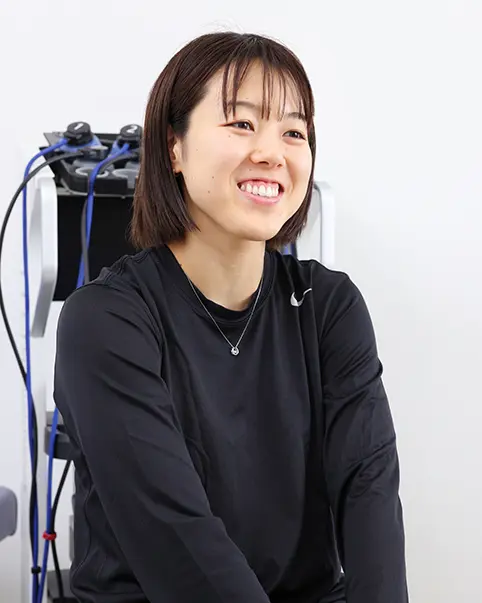
- ITO: Tell us how you got into basketball and why you chose to join the TOYOTA Antelopes.
-
Yamamoto: I started playing basketball in my first year of elementary school. My sister joined the basketball club. I tagged along. My mom had been a basketball player, so I was exposed to basketball from a young age.
My father had been a volleyball player, so my first sport was volleyball. But then I encountered basketball. I played basketball all through junior high and high school. I’ve been playing basketball ever since.
-
I went to high school at Ohka Gakuen High School in Nagoya in Aichi Prefecture. We won the national championship while I was there. After that, I joined the TOYOTA Antelopes, who are also based in Aichi Prefecture. I’ve been with them ever since. To tell the truth, I was also considering another team at the time. I couldn’t make up my mind who to join. However, I was attracted by the personality of the TOYOTA Antelopes team when I watched them play their opening match of the season, so I chose them. The head coach gives us clear-cut instructions. All of us apply ourselves fully and learn from one another. We all really love playing basketball. That atmosphere is the appeal of the TOYOTA Antelopes.

- ITO: You play in the W League and also for the Japan national team. It must be a lot of work to stay in top condition all the time. What do you keep an eye on day to day to stay in shape?
-
Yamamoto: The W League (the highest league for women’s basketball in Japan) season runs from October to mid-April. There aren’t any W League games in the off-season, so I practice with and play for the national team during that time. This means I’m practicing and playing games nearly year-round, so I emphasize preparation above all. The prerequisite goal is to get through the year without major injuries, so I prepare well before I start practicing. Thanks to this approach, I’ve never suffered a major injury.
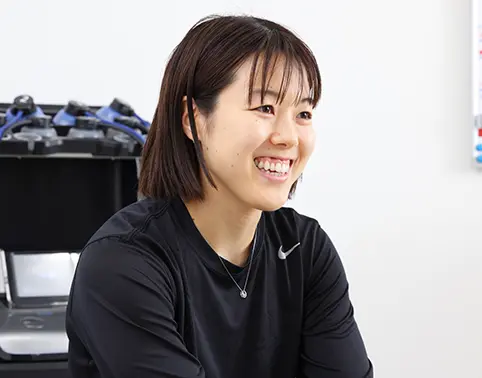
-
Before practice, I always start by getting a feel for the state of my body. First, I check where the muscles are tense and where I feel stiff. I address these problems. Then I’ll do some maintenance training. That’s my routine. For example, if practice starts at 9:30, I get to the gym around 7:40 and spend the time from 7:45 to 9:00 assessing my physical condition. Then, around 30 minutes before practice, I start shooting some baskets. And after practice or a game, I try to assess how my body has changed before stretching.
-
I also watch what I eat. I make sure to eat a well-balanced diet, especially things like leafy vegetables. I take in additional protein between my three meals a day. Diet is crucial for recovery and for staying in good condition in general.
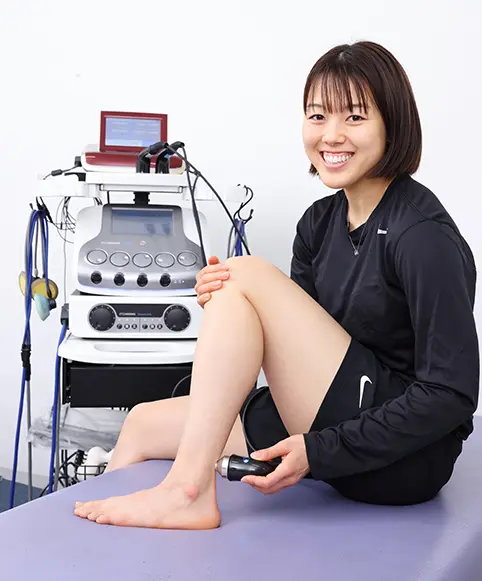
- ITO: In basketball, what parts of the body are most likely to cause pain? How do you go about taking care of yourself on a daily basis?
-
Yamamoto: When fatigue from practice and games accumulates, I tend to suffer pain mainly in the Achilles tendon. I think it’s because my style—to make lots of plays pivoting on my left foot, which puts more strain on the Achilles tendon than on other parts of my body.
I want to be in perfect condition every time I play, so I take good care of myself while keeping my personal tendencies in mind. I try to find ways to make sure I’m fresh before games. I don’t want to play through pain. Court surfaces vary in hardness. Harder floors tend to be more likely to generate pain after you play on them. So I also pay attention to differences in the playing environment.
-
And even if I’m not feeling pain, fatigue may be accumulating without me knowing, so it’s important for me to treat my Achilles with ultrasound, regardless of whether there’s pain or not. My conditioning during training camp and tournaments is pretty good these days. So I tend to be able to concentrate on playing pain-free.
I believe taking care of my body is essential to continue performing at the highest level for longer periods of time.
Preventing injuries by adding at-home care
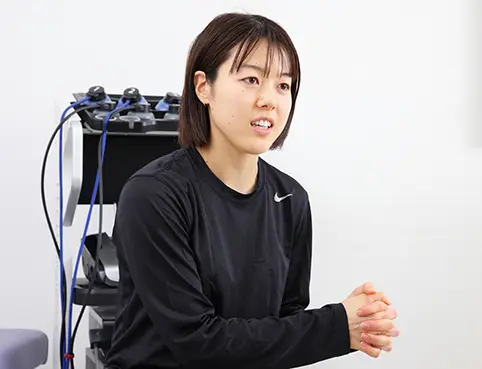
- ITO: Has anything changed since you began using physiotherapy devices?
-
Yamamoto: The first time I used a treatment device was at an osteopathic clinic in my junior high school days. But back then I only used it for maintenance or treatment. It’s only recently that I’ve started to use it on a regular basis.
The main reason for using a treatment device isn’t to treat injuries, but to prevent them and to avoid chronic pain.
-
A prerequisite for playing throughout the season is staying in good shape. If I were unable to practice due to injury or pain, I would obviously not be able to do my own practice, which wouldn’t be good, and I think it would also affect my practice with the team. For those and other reasons, it’s a matter of course for me to try to stay in tune with my body so that I can stay on the court.
I also feel that having everyone maintain their own physical condition is an important factor in building a strong team.

- ITO: Do you use the treatment device at times other than pre- and post-practice care at the club?
-
Yamamoto: I personally own a portable device. During long journeys to games, for example, I’ve heard that using this treatment device to apply microcurrents to muscles helps to ready them for action. So I use it not just to prevent injuries, but to ensure I can move around in the way I want.
It’s also nice to have at home. That lets me use it whenever I need to.
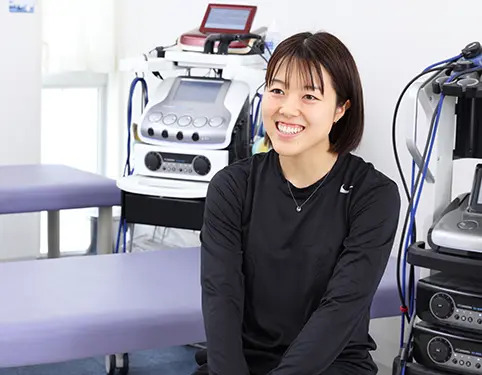
- ITO: How important do you think self-care is? Do you think it matters for people who aren’t elite athletes?
-
Yamamoto: I think it does. I think it matters no matter how old you are. The portable treatment device I use provides three types of useful electrical stimulation: TENS, EMS, and microcurrent.
I believe the habit of self-care also builds an understanding of your body, which helps prevent injury and improves performance.
-
The first step to understanding how your body is built is to take an interest. That’s true not just for basketball, but any sport. So it’s a good idea to start self-care in any way that you can.
Enjoying basketball on the world stage my own way
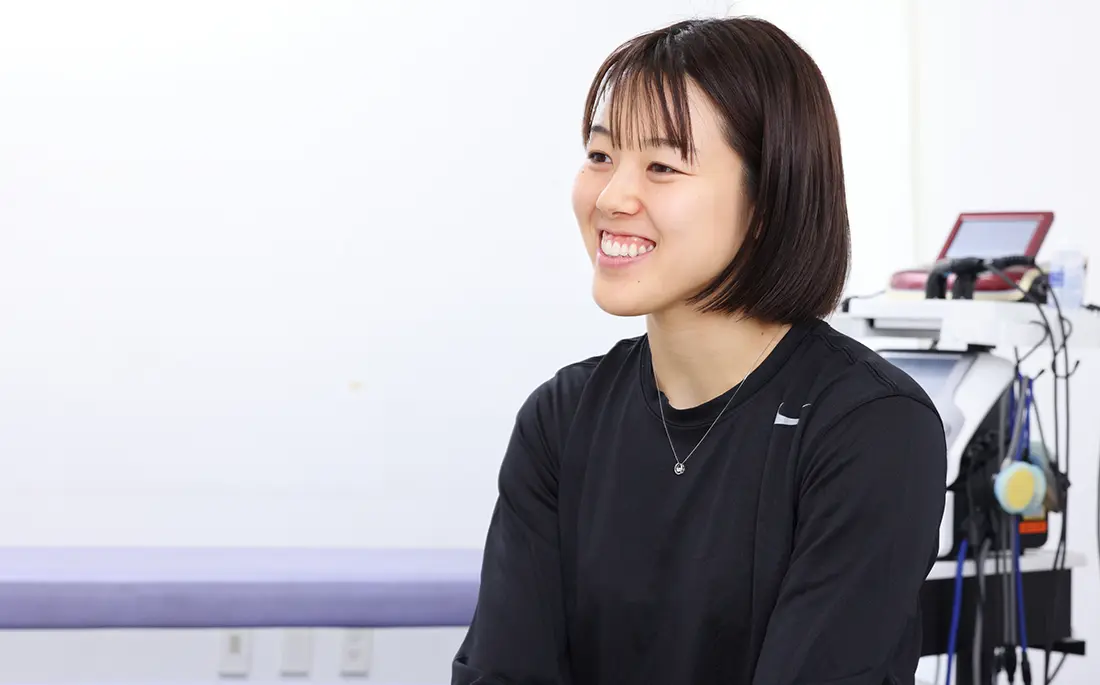
- ITO: Lastly, what do you want to work on as a player? What are your future prospects and goals?
-
Yamamoto: This is a long way into the future. But once I’m done playing basketball, I’d like to have time to relax and do nothing. It’s still a bit early for that, so right now I’m going to improve my skills so that I can get the best possible results in basketball.
Beyond that, my goal right now is to be selected to represent Japan at the international competition this summer. Of course, I also want to avoid injuries and play in my own way.In the future, I think I’d like to play in the WNBA (US women’s professional basketball league). So I plan to train for that. I’ll always try to be bold in my plays, and I want many people to see how much I enjoy playing basketball.
![Basketball player [Mai Yamamoto]](/ito-sports-project/assets/img/interview/012/pct_bio.webp)
Born October 23, 1999 in Hiroshima Prefecture.
Plays for the TOYOTA Antelopes.
Growing up in a family entirely of athletes, she started playing basketball in first grade and went on to win national championships in elementary, junior high, and high school.
When in high school, she joined the TOYOTA Antelopes via an early entry scheme, and won consecutive league titles in the 202021 and 2021-22 seasons.
She was also selected to represent Japan in 3x3 basketball. She won the 2019 U-23 World Cup and was named the tournament MVP, and helped the team come fifth at the Tokyo 2020 Olympics.
She scored a priceless basket in the final Olympic qualifier, booking her a ticket to Paris and leading Japan to their third consecutive Olympic appearance.
